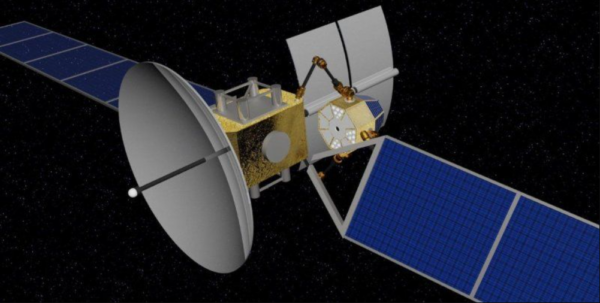RHESSI is anticipated to reenter the Earth’s atmosphere in April, nearly 21 years after its launch. From 2002 until its decommissioning in 2018, RHESSI observed solar flares and coronal mass ejections from a low-Earth orbit, enabling scientists to comprehend the fundamental physics of how such powerful energy bursts are generated.
The Department of Defense predicted on April 19 that the 660-pound spacecraft will reenter the atmosphere at approximately 8:50 p.m. EDT on April 19, with a +/- 1 hour margin of error. NASA and the Department of Defense will continue to monitor reentry and revise their forecasts.

On Earth, 1 in 2,467 people risk injury.
NASA anticipates that the majority of the spacecraft will burn up upon reentry, but that certain components will survive. Approximately 1 in 2,467 individuals are at risk of suffering injury on Earth.
The spacecraft was launched aboard a Pegasus XL rocket by Orbital Sciences Corporation on a mission to image the high-energy electrons that transport a significant portion of the energy released by solar flares. An imaging spectrometer captured X-rays and gamma rays from the Sun to accomplish this. Before RHESSI, neither gamma-ray nor high-energy X-ray images of solar flares had been captured.
RHESSI data provided crucial insights into solar flares and their associated coronal mass ejections. These events discharge the energy equivalent of billions of megatons of TNT into the solar atmosphere in a matter of minutes and have the potential to disrupt electrical systems on Earth. Understanding them proved difficult.

Throughout the duration of its mission, RHESSI recorded over one hundred thousand X-ray events, enabling scientists to investigate the energetic particles in solar flares. The imager assisted researchers in determining the frequency, location, and movement of the particles, which allowed them to comprehend where the particles were accelerated.
Gamma rays from lightning storms are more common than thought.
RHESSI has documented the vast size range of solar flares, from nanoflares to superflares that are tens of thousands of times larger and more explosive.
Even discoveries unrelated to flares were made by RHESSI, such as enhancing measurements of the Sun’s shape and demonstrating that terrestrial gamma-ray flashes – blasts of gamma rays emitted from high in Earth’s atmosphere during lightning storms – are more frequent than previously believed.
NASA decommissioned RHESSI after 16 years of operation due to communication issues with the spacecraft. NASA’s Goddard Space Flight Center in Greenbelt, Maryland, managed and operated the RHESSI Small Explorers mission.

